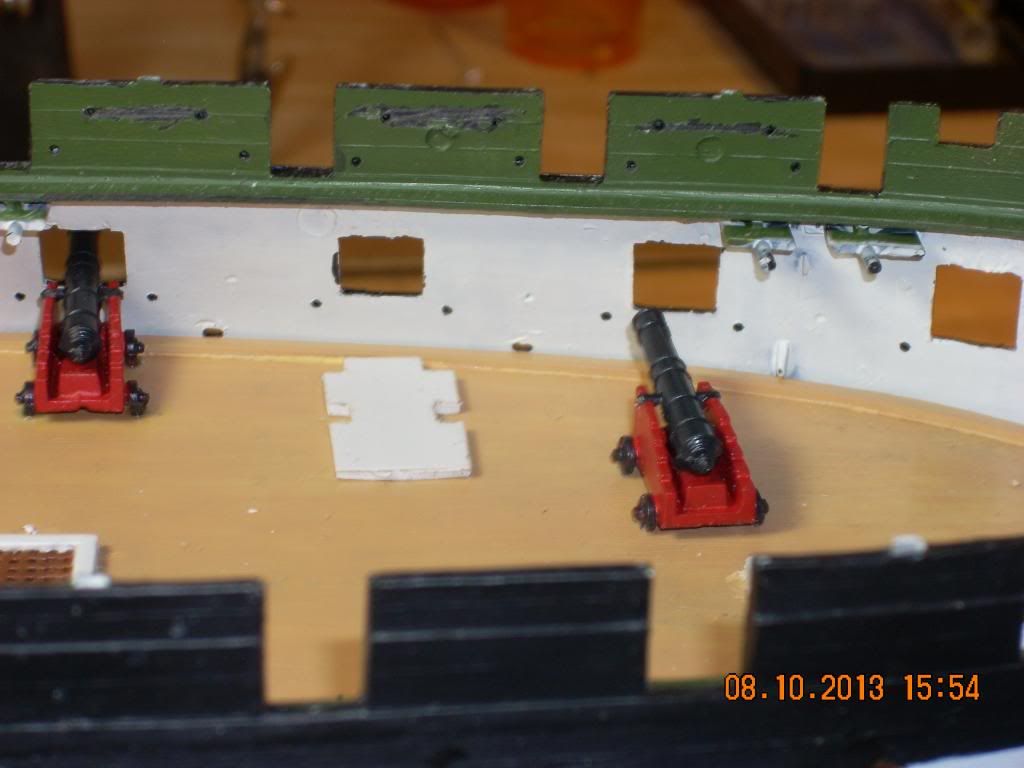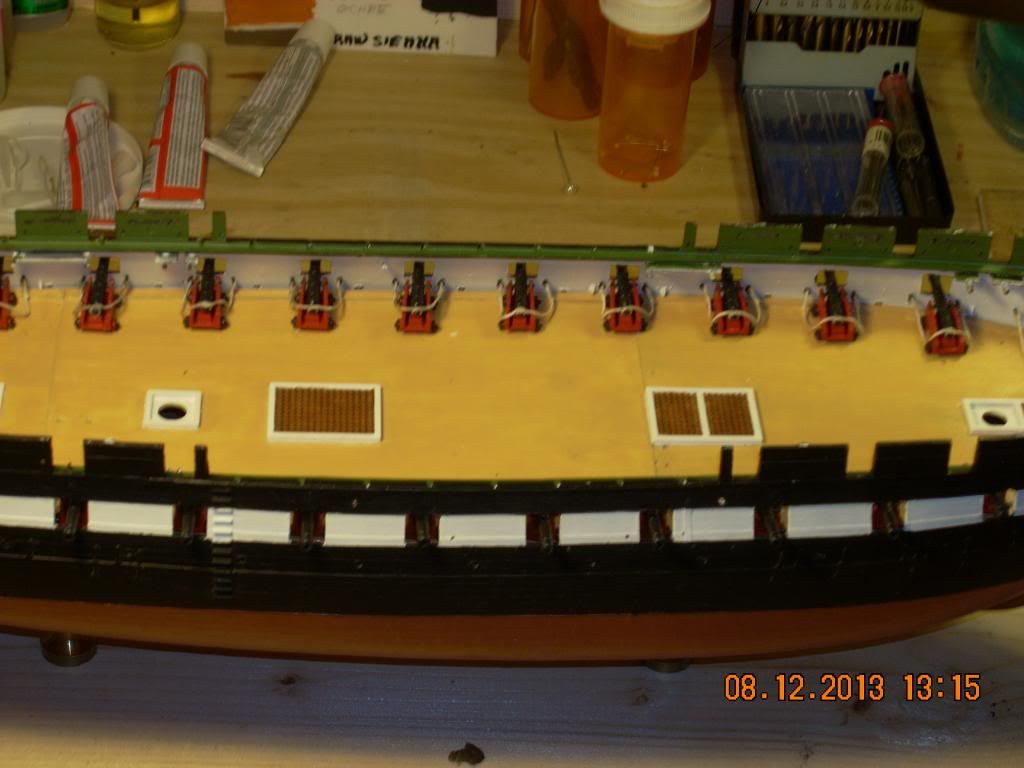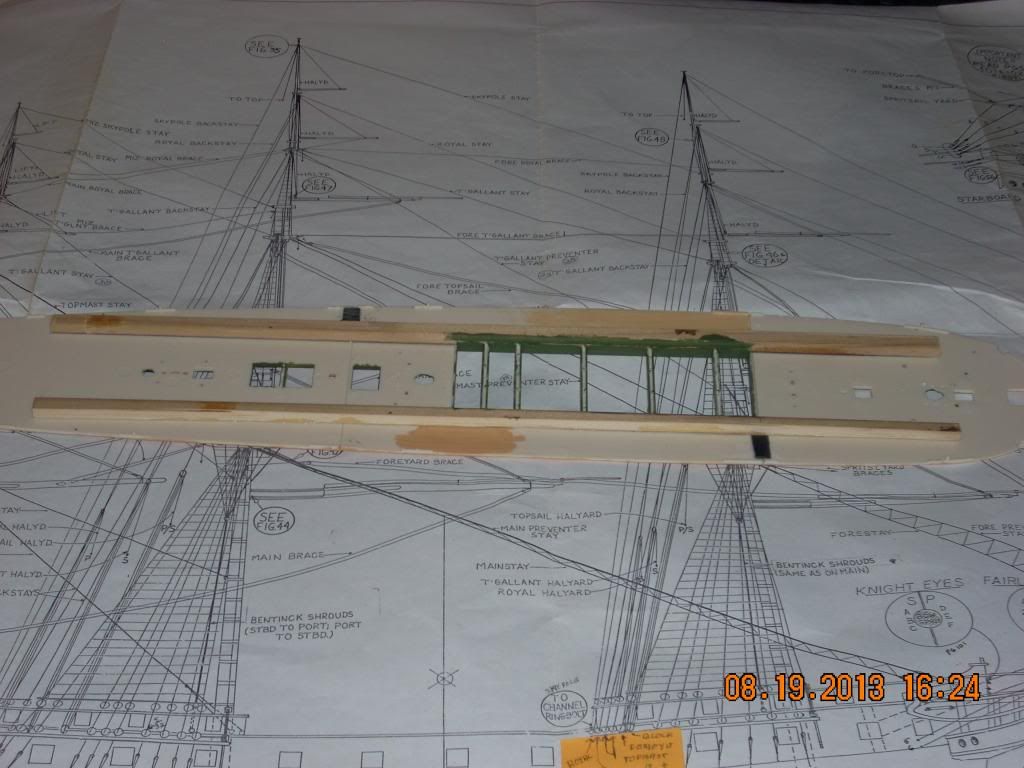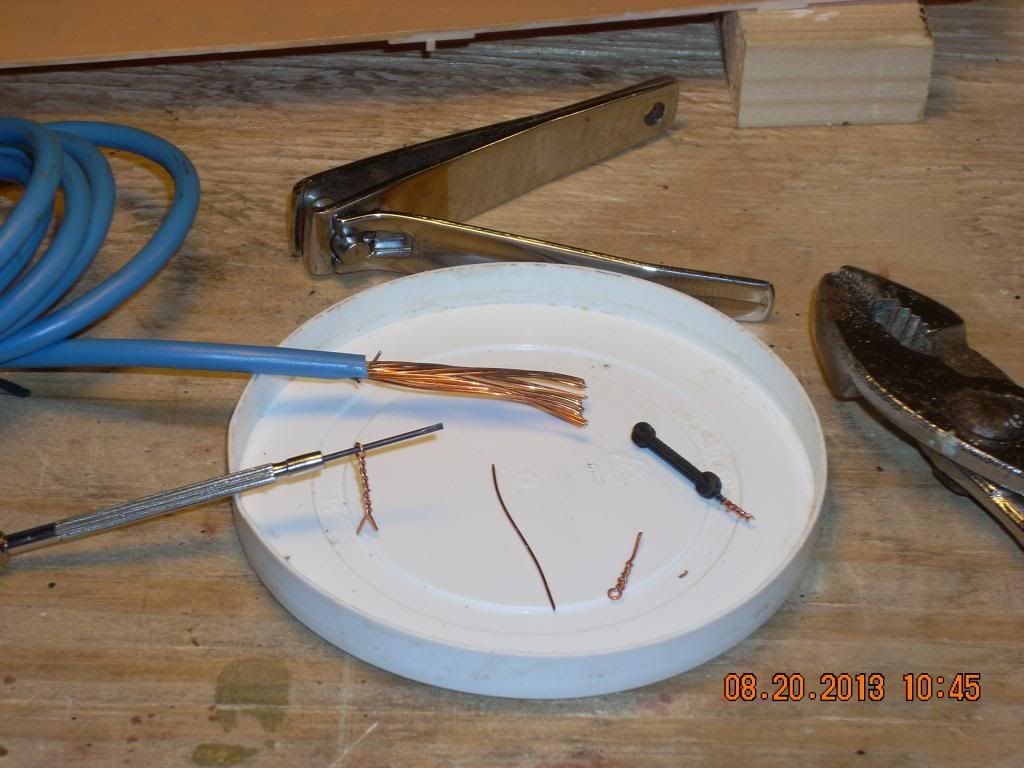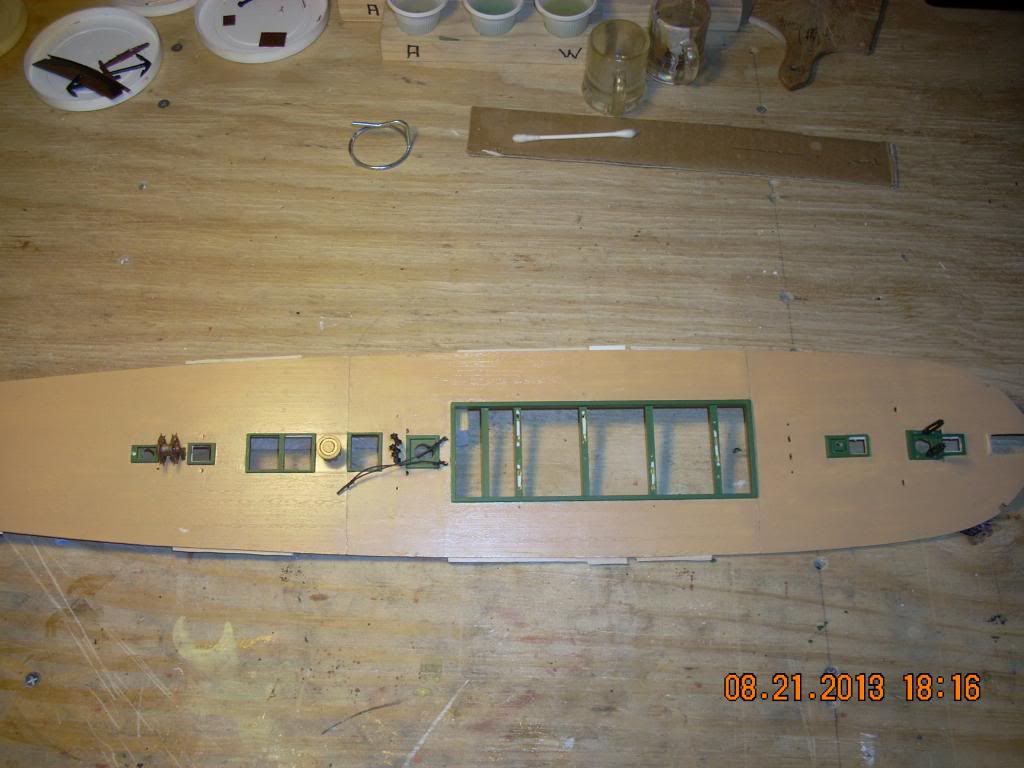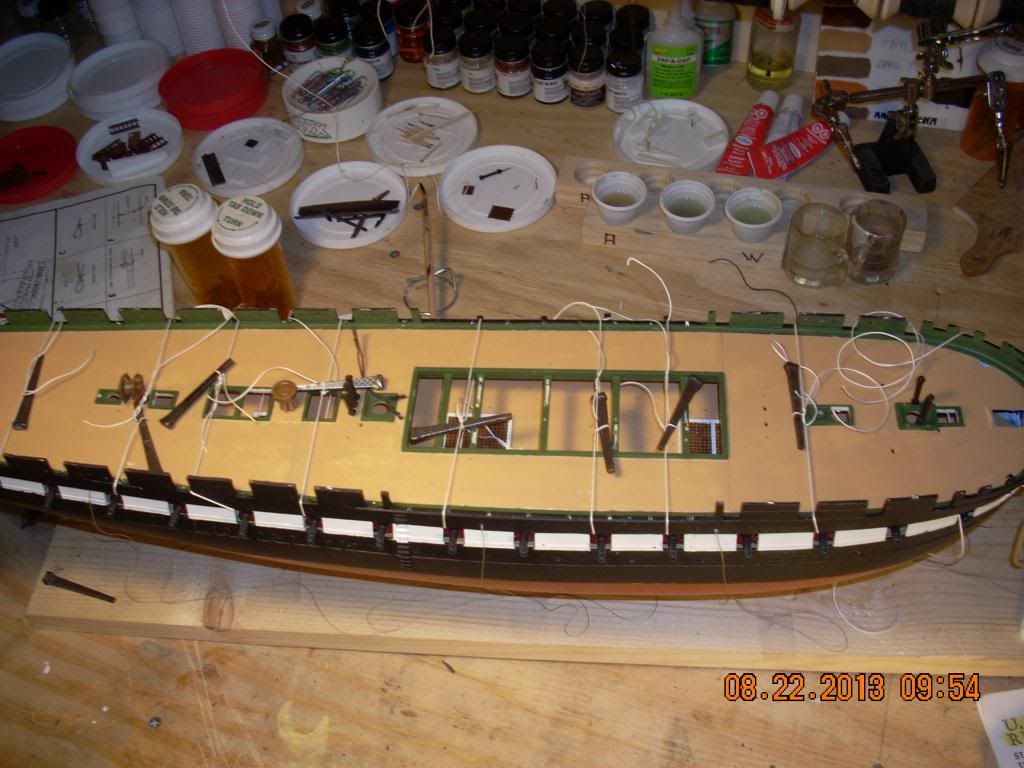When all else fails, follow instructions.
I failed on at least three other attempts to complete the Revell model of the USS Constitution. The main reason for my failure was that I did not follow instructions. I tried to do too much and went beyond my skill level without proper preperation.
I purchased the Bluejacket Shipcrafters instruction book and plans with the intent of of building the Revell kit and rigging it acording to the Bluejacket plans. It sounds simple. After all, they are the same scale. But, for me, it was a disaster.
This time, I am going to follow instructions and go step by step through completion. Well, I am going to follow instructions for the most part.
After all my attempts, I have develpoped a respect for the instruction book. It is one of best I have seen. Not only is it written in English, it tells you what to do instead of giving you some symbol to follow. And there is a purpose in the order of the steps, especially in the rigging.
Some interesting and informative sources:
Arnot, Lawrence. U.S.S. Constitution 18-12-1815, Bicenentennial Edition. Searsport, Maine: BlurJacket Inc., 2000
Gillmer, Thomas. Old Ironsides, The Rise, Decline, and Resurrection of the USS Constitution. Camden, Maine: International Marine, 1997
Lankford, Ben. How To Build First-Rate Ship Models From Kits. Hollywood, Florida: Model Expo, 1999
Magoun, Alexander. The Frigate Constitution and Other Historic Ships. New York: Dover Publications, 1987
Martin, Tyrone. A Most Fortunate Ship, Revised Edition. Annapolis: Naval Institute Press, 2003
The one thing I am not going to do is to agonize over anything. The moment this build ceases to be fun, it goes back in a box
STEP 1
Painting;
I am using Model Masters acrylic paint. I have come to like this paint. It dries fast, is water solubile and brushes clean up with window cleaner and amonia. Fast drying is a double edge sword: I have to clean the paint brush about every 10 to 15 minutes to prevent the paint from drying on the paint brush.
I am using BlueJacket Shipcrafters paint schedule for Isaac Hull’s paint scheme. It calls for the spardeck bulwarks and waterways to be painted green and the gundeck ceiling and gunstripe to be white.
What shade of green? I haven’t the fogiest idea. So I slected a medium green. Right in the middle and it will have to do.
Assembly;
This thing is warped! Look at the gap between the two hull halves.
It needs a bunch of clampsThe molds for this model are probably 50 to 60 years old. I think there are only two molds. One is for Revell-Monogram and that one is in China. The other is for Revell Germny and it is in Europe. (I forget which country.) I have attempted both and I can state that the molds are identical.
The instructions are identical with one exception: The German plans have three pages showing the location of each part. It is very handy and I don’t see why Revell-Monogram won’t inlude them in their instructions.
The molds are showing their age. But I don’t think that the warping is a product of the mold. I think that it is a function of the cooling of the plastic after molding. It means that someone was not paying attention to detail but the next one may pay attention to this detail and the parts might not be warped. It is what it is and I will deal with it.
There is a very nice feature of this model that is not mentioned in any of the instructions. The model was designed to be mounted on pedestals. Trap a #8 nut in the cavity provided and open up the path for the screw before assembly.
Then you can mount the model on a board using pedestals. I bought a pair of brass pedestals from BlueJacket. The mounting board is temporary scrap of 1 x 6 pine.
[On to step two.
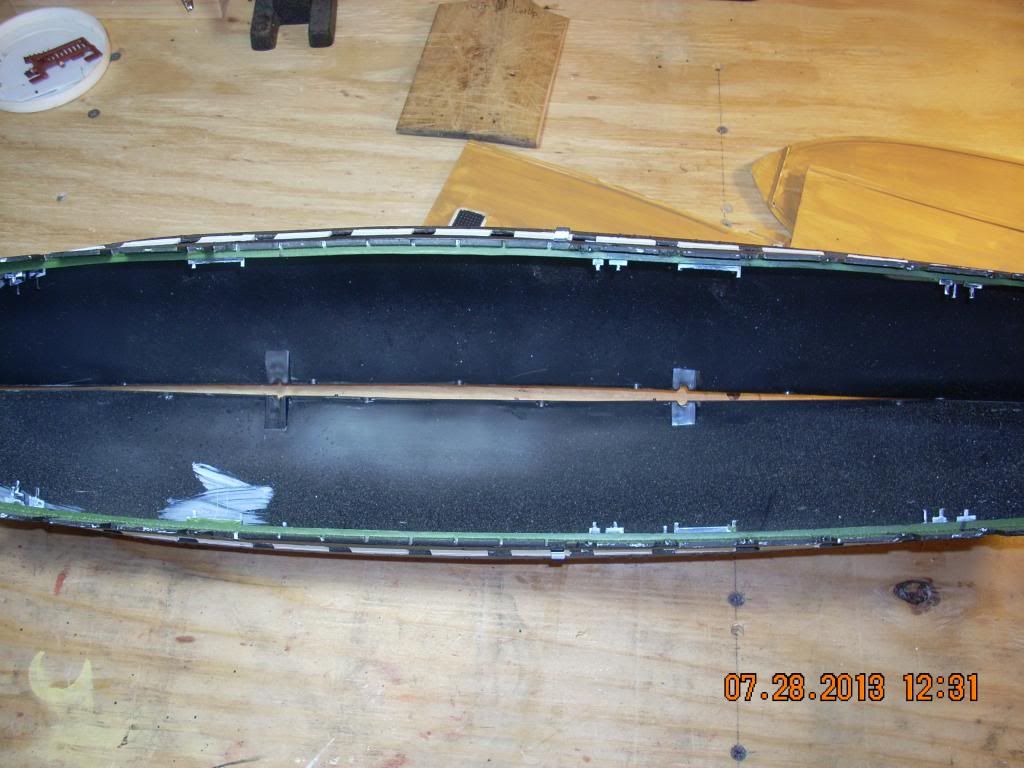
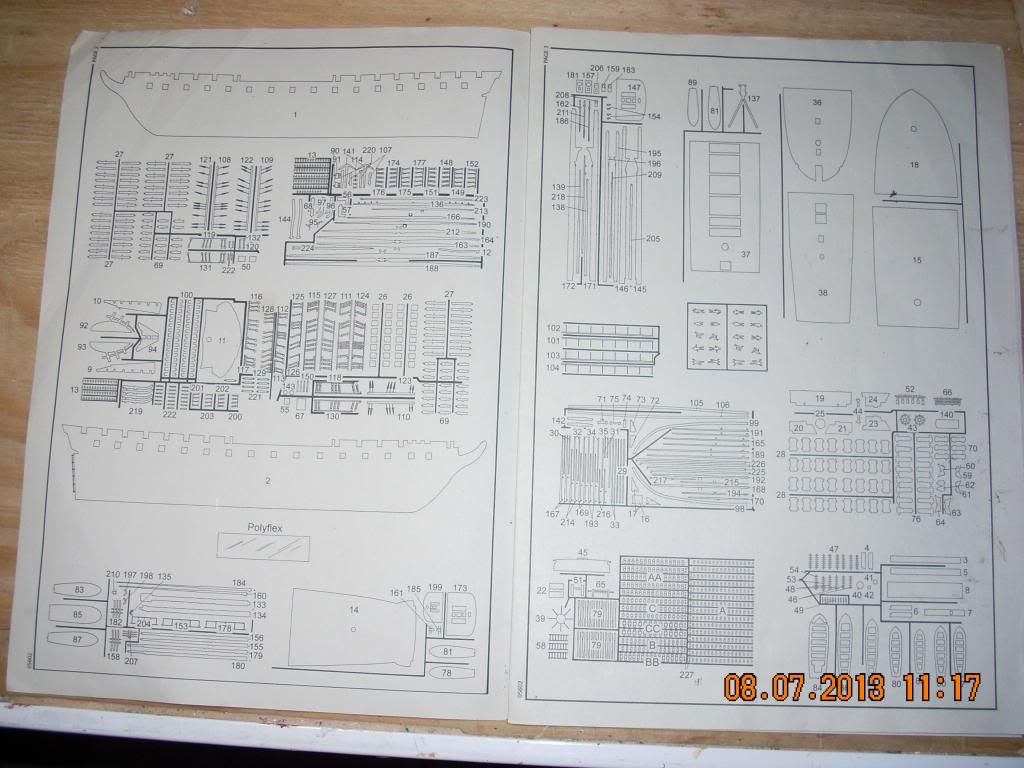
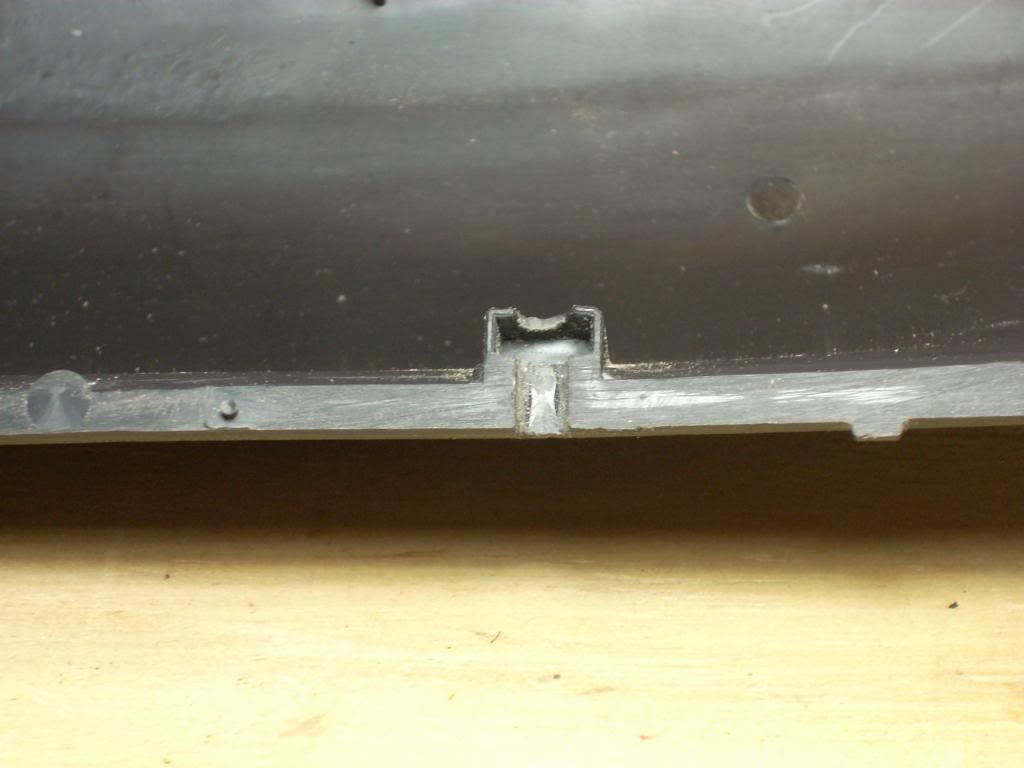
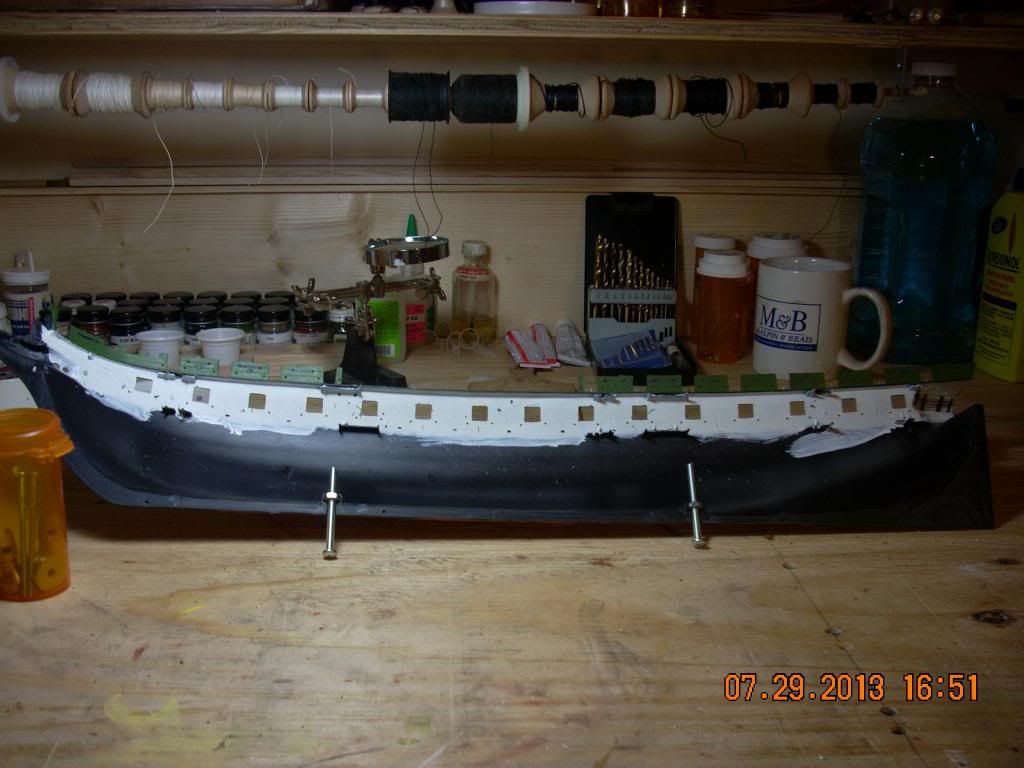
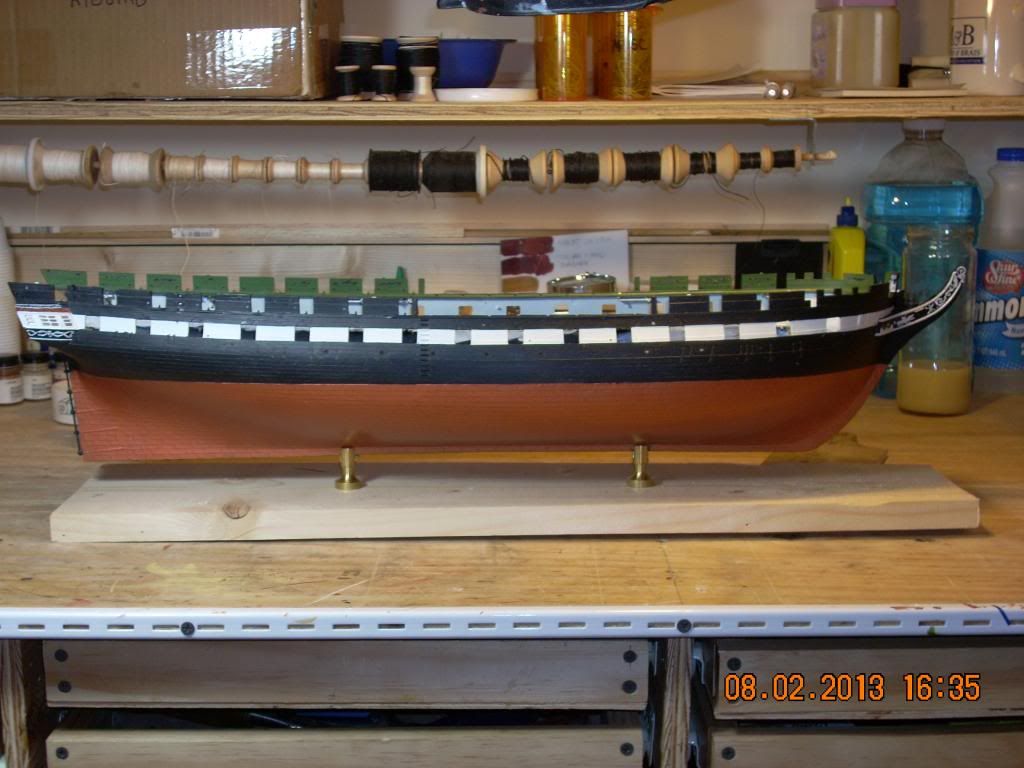
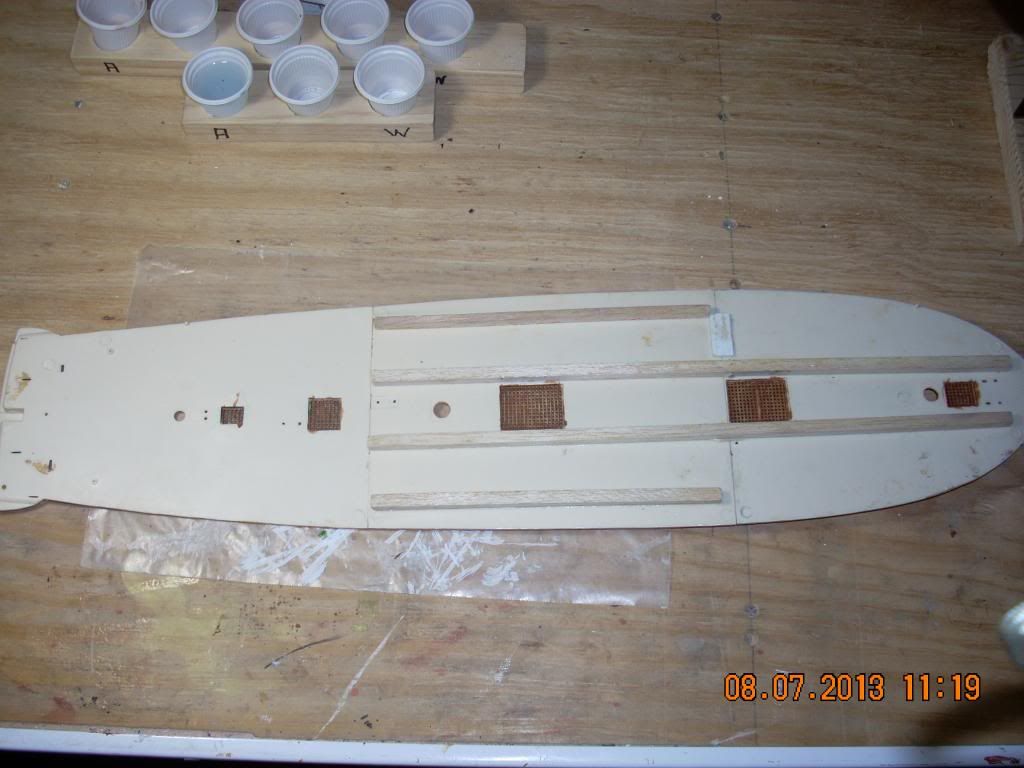
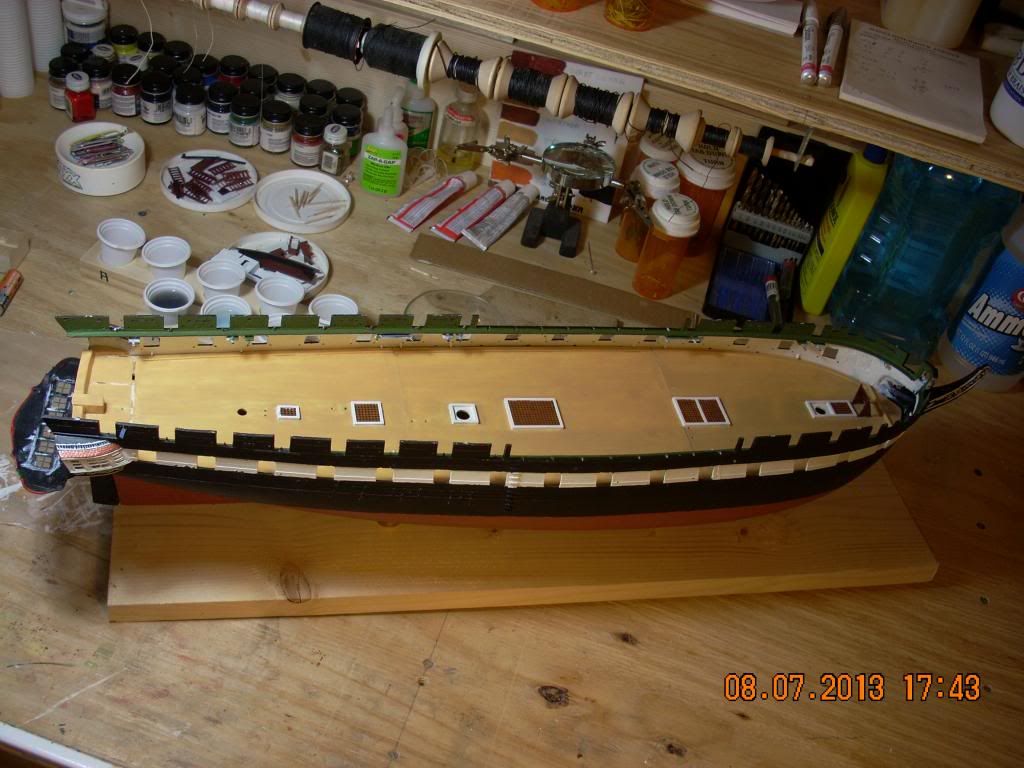
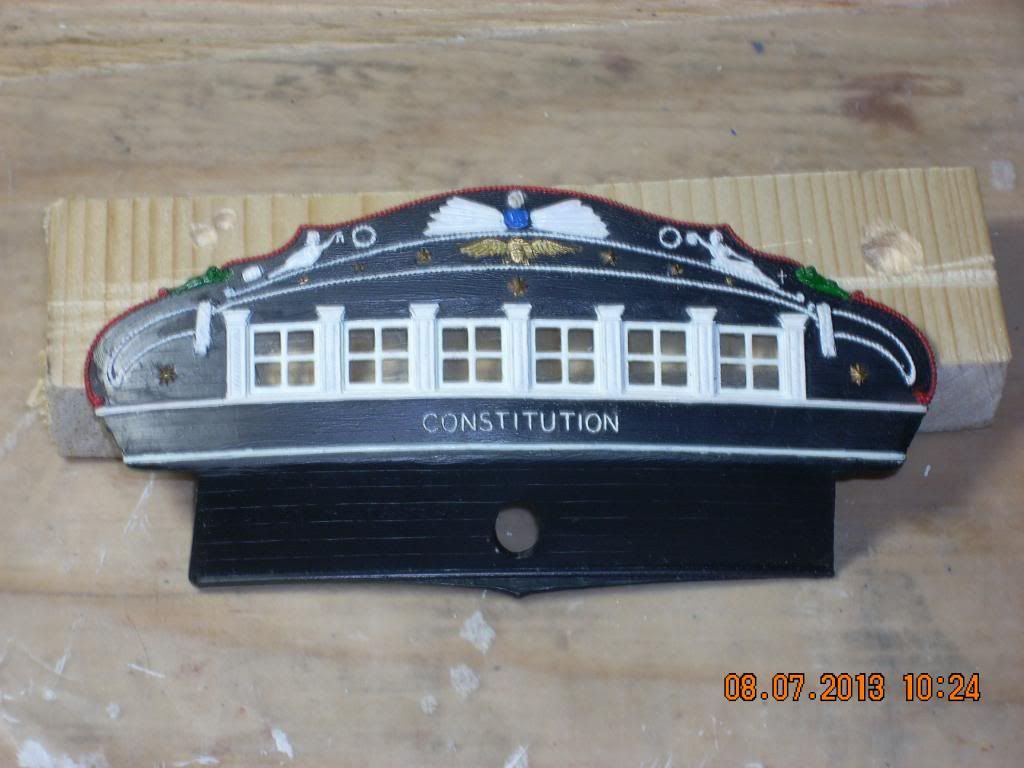
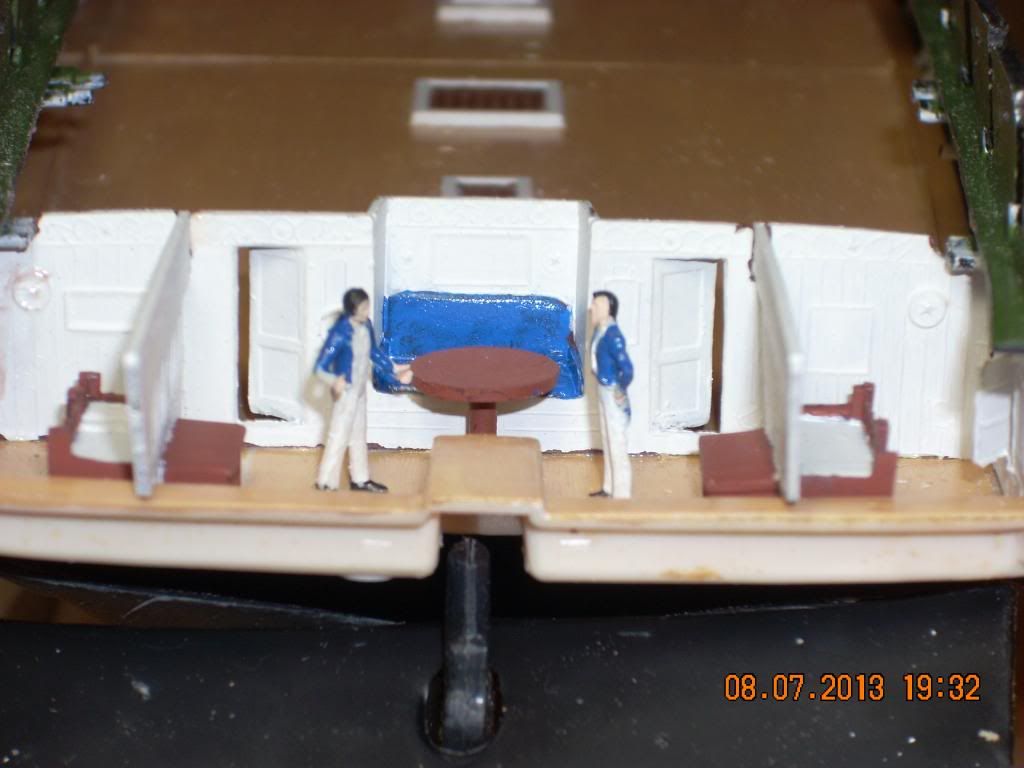
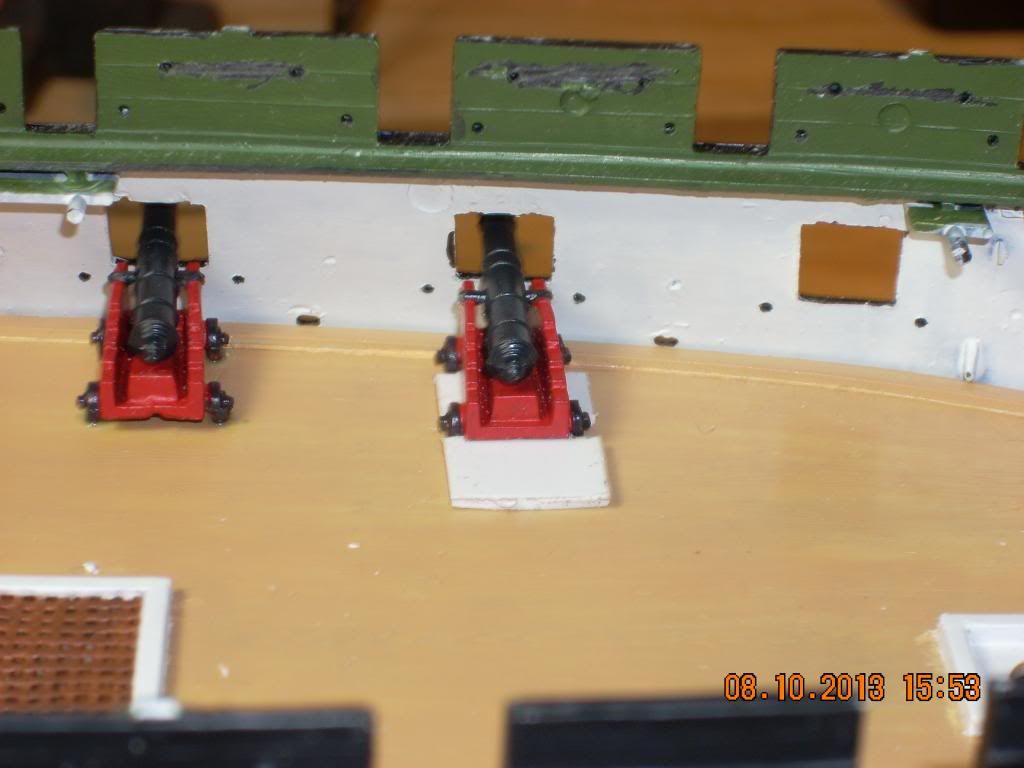 ](
](